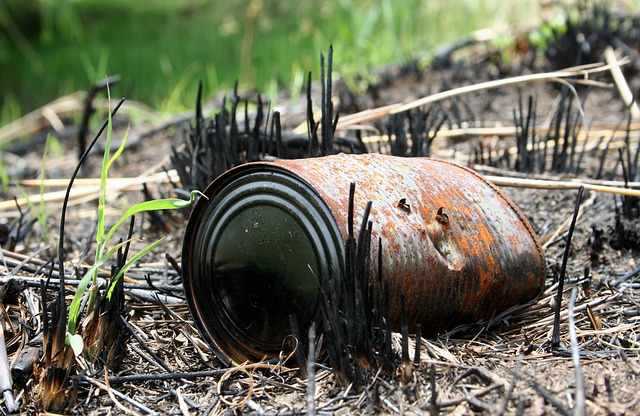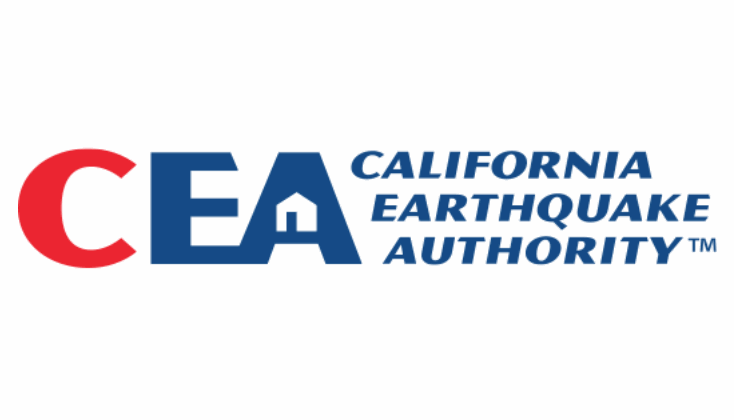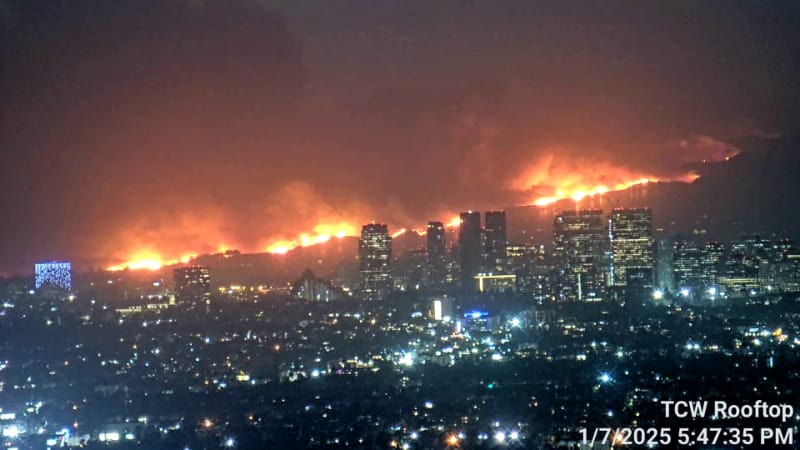Broking group BMS has said that it expects the insurance and reinsurance market losses from the Los Angeles region of California wildfires are likely to exceed $25 billion, while analysts at KBW have analysed what an industry loss of up to $40 billion might mean for the market.
 Estimates for the insurance industry loss from the wildfires have been steadily rising, with many sitting in a range from $15 billion to $25 billion, within which most are now moving towards the higher-end.
Estimates for the insurance industry loss from the wildfires have been steadily rising, with many sitting in a range from $15 billion to $25 billion, within which most are now moving towards the higher-end.
However, some estimates now suggest $30 billion or even higher may be the final bill for the insurance and reinsurance market, while Dowling said between $30 billion and $50 billion.
Still, the estimates for the number of structures destroyed or damaged by the ongoing fire situation in Southern California is being reported to be around 12,300, so that has not changed for a few days.
What is changing the estimates is the analysis around property values and precisely which properties and streets have been destroyed, with more granular data emerging and helping make that analysis easier. As well as views on additional costs the insurance market will bear, from additional living expenses, through fine art losses, and business interruption.
Insurance and reinsurance broking group BMS has now issued its view, saying it believes the total insured loss could rise above $25 billion.
BMS explained, “Damage assessments are ongoing. It has been reported that the estimated average residential replacement values in the Eaton area are about $1 million and exceed $2 million in both the Malibu and Pacific Palisades areas. So, a quick estimate yields $17B in insurance losses to be the floor, but we know the insurance losses here will not be formed from this simple calculation.
“These losses will likely exceed $25B as several factors will start to come into play that lead to the question of just how high that loss might be.”
The broker further stated, “Some of the questions that need to be asked that could drastically increase the losses center on how much will be paid out in additional living expenses. Hyper-demand surges in labor and materials will no doubt be a significant factor in an already expensive area of the country. We know disasters like these will take years, if not decades, to recover, and there are questions about how quickly this will occur.”
The company further added, “Many of the homes are bespoke and high-value, so it will take extra effort to understand designs and replacement costs. What factors will new laws and ordinances for either earthquake or wildfire might increase the rebuilding efforts of some structures? There are no doubt questions about possible fine art losses that might be more common in wealthy areas that have been affected. Smoke damage to structures outside the wildfire perimeter could add to the losses. Adjusters will be at a premium, and what type of litigation from claims disputes might arise, which could increase the loss-adjusted expense. Commercial losses can be more complex to estimate, and the resultant business interruption will add to the losses.”
There are also factors that could result in the industry loss coming in lower than anticipated, BMS also explained.
“How many structures are paid off and self-insured, and given that the CA Fair Plan only pays a maximum of $3M on residential policies, how much loss is covered above this? Are these structures self-insured above this limit, which would only widen the protection gap? How many structures were undervalued, given the high rate of replacement cost? The CA Fair Plan seems to be capped at $20M per location with new reforms offering a high-value commercial coverage option at $20M per building with $100M cap by per location, but how many of these policies have been issued since the reforms went in place in July 2024?” BMS said.
Concluding on the industry loss that, “The event is still ongoing, and the fires are far from contained, with higher winds forecasted over the next couple of days. For this reason, and the reasons mentioned above, it is too early to provide any credible loss estimate. Still, this will likely be the largest wildfire loss in modern times, surpassing the Paradise, CA Campfire of 2018, which would be a $11.1B wildfire event loss if it occurred today. It should also be noted that this far exceeds Verisk’s global average annual wildfire loss, which is 6% of the estimated $151B, which is about $9B annually.”
Another report of note has emerged from KBW, who’s equity analyst team have continued to analyse what the eventual fire losses might mean for the insurance and reinsurance companies under its coverage.
The fact the wildfires are still not contained, while weather conditions remain dangerous for further expansion or new fires to emerge, makes KBW’s analysts caution on the “continuing upside insured loss potential”.
As a result, the analysts have updated a $20 billion loss estimate they gave the other day, saying that still with all the caveats around the uncertainty in these figures, “we update our initial estimates… for primary insurance losses for scenarios of between $25 and $40 billion.”
The KBW analysts have looked at the insurers and reinsurers under their coverage with the most exposure to California wildfire loss events and calculated where they believe their ultimate net losses could end up, based on market share and the estimated industry loss range.
At a $25 billion industry loss level a number of players would be expected to report UNL that matches or is near to their per-occurrence reinsurance attachment points, implying a chance of recoveries being made.
These include: Allstate; potentially AIG (presumably the Lexington tower); Assurant; Lemonade; Hippo; American Financial Group; Horace Mann; and Skyward Specialty.
At a $30 billion industry loss, the following can be added to the list as potentially nearing or making occurrence reinsurance recoveries due to the fires: The Hartford; Cincinnati Financial; Palomar; and James River.
Elevate the analysed industry loss to $35 billion and the list could include: AIG’s main tower.
At the top level analysed, for a $40 billion wildfire industry loss, KBW’s analysis does not add any more to the list, whose UNL has reached the retention of their reinsurance, but it’s clear at that size of market impact the reinsurance recoveries would be much more widely felt and retrocession recoveries also likely be in play.
Quota shares will take increasing losses at the higher levels as well, which has ramifications for some insurance-linked securities (ILS) fund strategies.
As more information on the damage caused by the ongoing wildfires in California emerges, a clearer picture of the potential for reinsurance capital impacts should emerge.
Also read:
– Autonomous raises its LA wildfire loss estimate to $25bn, $18bn from Palisades fire.
– California wildfires: Subrogation topic raised, as utilities come into focus.
– ICEYE satellite analysis: Over 10,900 buildings likely destroyed in Palisades and Eaton fires.
– Catastrophe bond price movements due to LA wildfire exposure.
– Evercore ISI: LA wildfire insured loss $20bn-$25bn. Could be one event under reinsurance.
– LA wildfire losses to “notably exceed” $10bn, could approach $20bn: Gallagher Re.
– Mercury says LA wildfire losses to exceed reinsurance retention.
– LA fires: “Considerable attachment erosion” likely for some aggregate cat bonds – Steiger, Icosa.
– LA wildfires: Over 10k structures destroyed. Insured losses up to ~$20bn, economic $150bn.
– LA wildfire losses unlikely to significantly affect cat bond market: Twelve Capital.
– LA wildfires unlikely to cause meaningful catastrophe bond impact: Plenum Investments.
– JP Morgan analysts double LA wildfire insurance loss estimate to ~$20bn.
– LA wildfires: Analysts put insured losses in $6bn – $13bn range. Economic loss said $52bn+.
– LA wildfires bring aggregate cat bond attachment erosion into focus: Icosa Investments.





















 English (US) ·
English (US) ·